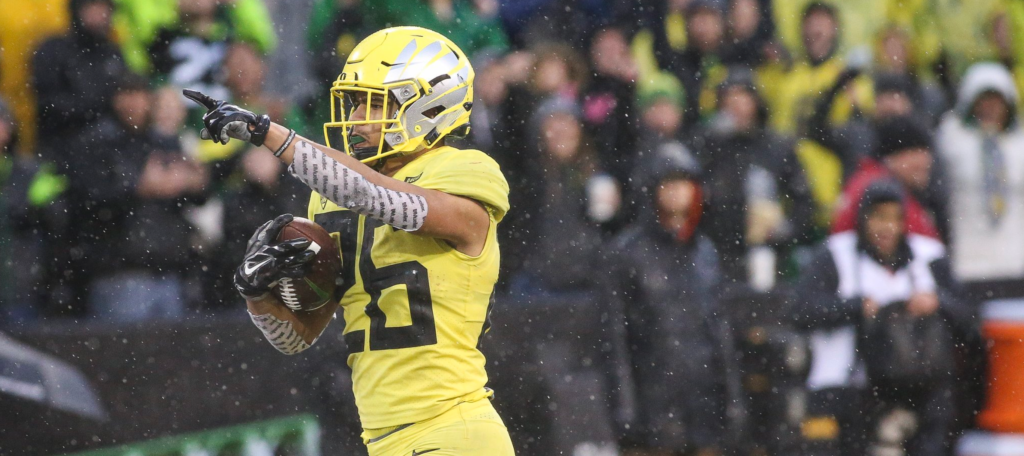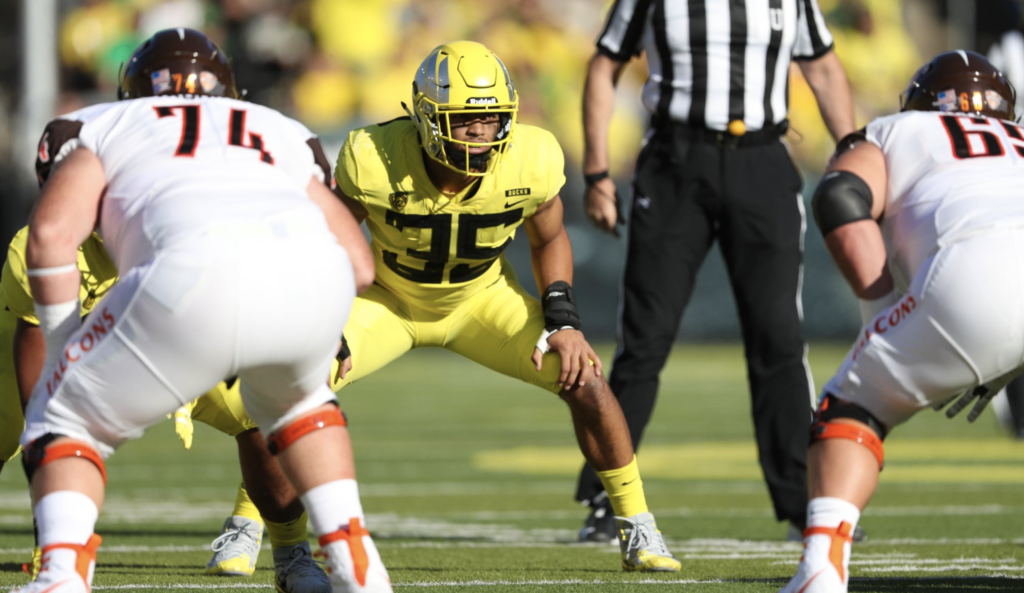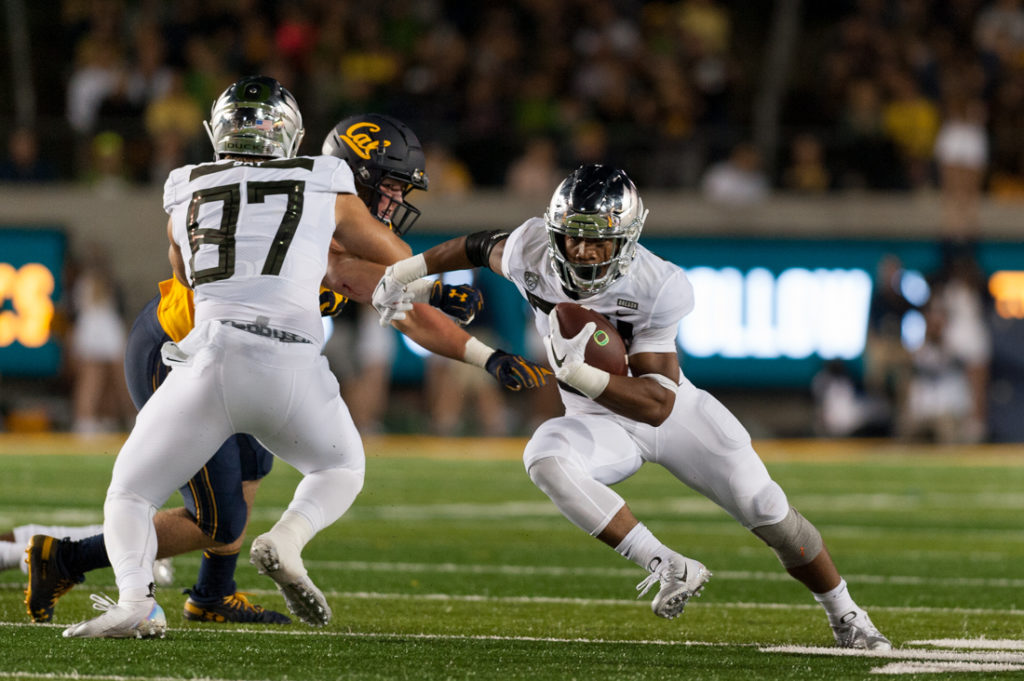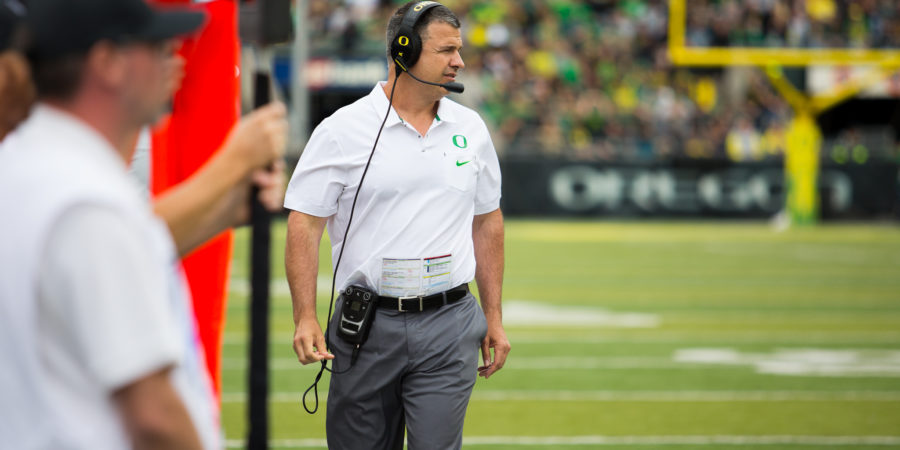Poof! Just like that, the end of the 2018 season is nigh for the Oregon Ducks.
Mario Cristobal’s first full season on the job as Ducks head coach has to generally be considered a success considering the program’s Herculean efforts on the recruiting trail, along with a landmark win over bitter rival and no. 7-ranked Washington en route to an eight-win regular season – Oregon’s first since 2015.
However, that’s not to say the 2018 campaign wasn’t without its fair share of warts. Predictable and lackluster offense, injuries to key players, and inconsistent performances from half to half underscored and largely coincided with a month-long stretch in which the Ducks lost three of four games all on the road.
With a New Year’s Eve matchup with Michigan State now on deck, Oregon hopes the Redbox Bowl serves as an unofficial launch pad into a 2019 season that will be as anticipated as any season for Duck fans over the past five years.
With literal hours left in the 2018 season, WFOD takes a closer look at the keys to victory over Michigan State.

1. Ground game must hold its own against Michigan State’s top-ranked rush defense
The Spartans’ may enter the Redbox Bowl as a 7-5 team, but that satisfactory record isn’t reflective of what Michigan State possesses on the defensive side of the ball – particularly as it relates to stopping the run. Of the 130 teams in the FBS, the Spartans boast the nation’s best run defense, surrendering just 81.33 yards per game and only 2.67 yards per rush attempt. In fact, Michigan State’s yards per game average is the nation’s best average by a distinct margin, as the next closest team – Texas A&M – checks in at an even 92 yards per game.
With numbers like that and with bonafide playmakers at every level of their defense, don’t expect the Spartans to be phased by the challenge the Ducks hope to pose with CJ Verdell and Travis Dye behind a veteran and talented offensive line. Yes, Oregon owns the Pac-12’s second best rushing offense averaging 191.25 yards per game and has come on late in the season with strong efforts on the ground against their last two opponents in Arizona State (187 yards) and Oregon State (392 yards), but this will undoubtedly be the best front the Ducks have faced this season. Against comparable competition in Utah and Washington, which claim the nation’s fourth and 16th-best rush defenses, Oregon rushed for 117 and 177 yards, respectively. Their 3.63 yards per carry average in those two games resulted in one win and one loss, though it’s worth noting that the Ducks were without arguably their best offensive lineman for roughly six of those eight quarters following the ankle injury suffered by Penei Sewell versus the Huskies. That 3.63 figure is the likely the baseline Oregon will need to achieve on the ground in order to operate with effectiveness on offense.

2. Take advantage of the Spartans’ anemic offense
As good as Michigan State is on defense, the Spartans’ offense is perhaps its exact inverse. In fact, Michigan State is among the nation’s worst teams offensively, averaging 19.8 points per game (tied for 122nd nationally) and 343.0 yards per game (117th). Much of that has had to do with subpar play from the quarterback position, as both Brian Lewerke and Rocky Lombardi have struggled mightily in their opportunities to lead the Spartans on offense. Additionally, injuries to their best running back (LJ Scott) and best receiver (Felton Davis) have further impeded any success by Spartans’ offense. Scott, who has missed most of the season, is expected play in Monday’s game, but Davis was lost for the season due to an Achilles’ injury suffered against Michigan.
Defensively, the Ducks have taken a notable step back this season after an incredible bounce back year in 2017 which came on the heels of a 2016 season in which Oregon set new lows for defensive ineptitude. Ranking seventh in the Pac-12 in both scoring defense and total defense this season, the Ducks have been much better on that side of the ball over their last two games, limiting Arizona State and Oregon State to 324 and 336 yards, respectively. Though neither offense would ever be confused with elite, both offenses do rank in the upper half of the conference in terms of total offense and are light years ahead of where Michigan State is at in 2018. If the Ducks continue their recent trend on defense, the odds will be heavily stacked against the Spartans when it comes to their chances of earning the victory.

3. Take advantage of opportunities deep in Michigan State territory
Moving the ball between the 20s will be difficult enough, but if the Ducks are to find true success offensively, they’ll need to make the most of the opportunities they have when they reach the Michigan State red zone. The Ducks have been an average team nationally when they’ve reached the red zone, scoring 84.31 percent of the time (64th nationally). Meanwhile, the Spartans have demonstrated great resolve when opponents have reached the red zone, ranking 35th nationally in opponent red zone conversions (80 percent). Considering the Spartans also rank tied for fifth nationally in the number of red zone attempts their opponents have enjoyed this season (30), conversion opportunities figure to be few and far between for Oregon in this contest.

